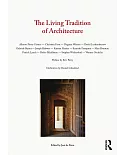From the Gothic to the contemporary, glass has transformed the structural, formal, and philosophical principles of architecture. In The Glass State, Annette Fierro views the many
meanings of transparency in architecture. Specifically, she analyzes the transparent monumental buildings that were built in Paris between 1981 and 1998 as part of Francois Mitterrand's program
of Grands Projets. The Grands Projets provide a rare opportunity to study a finite set of buildings constructed of similar materials, in the same time period, in a specific urban
landscape, and with related ideological missions.
Fierro employs a "discourse of the detail," in which the smallest architectural detail manifests the political, theoretical, and urban contexts of the building's design and construction. She
examines the paradox of the most pared down architectural configurations being used to support the most complex meanings. Intrinsic to Mitterrand's glass buildings in Paris, for example, is a
political concept: the metaphor of accessibility as a means of breaking open cultural institutions previously closed to the public.
In addition to the structures of the Grands Projets -- the Institut du Monde Arabe, the Grande and Petite Pyramides du Louvre, the glass greenhouses at utopian park projects at La
Villette and Andre Citroen and the Bibliotheque nationale de France -- Fierro discusses the Fondation Cartier and two precedent structures, the Centre Georges Pompidou and the Eiffel Tower.





















